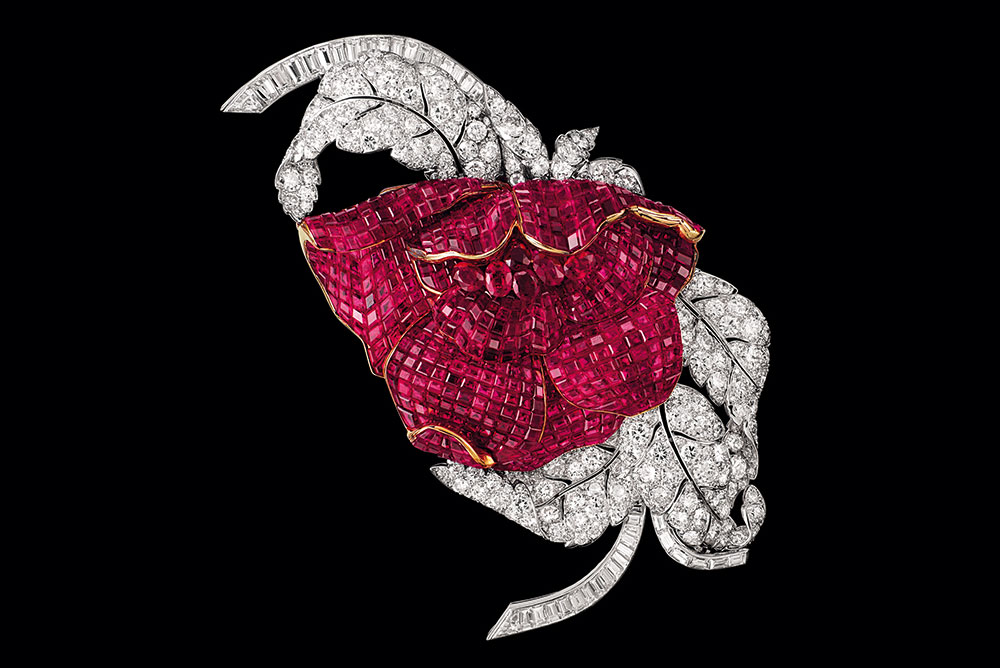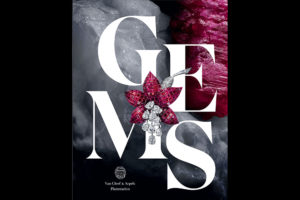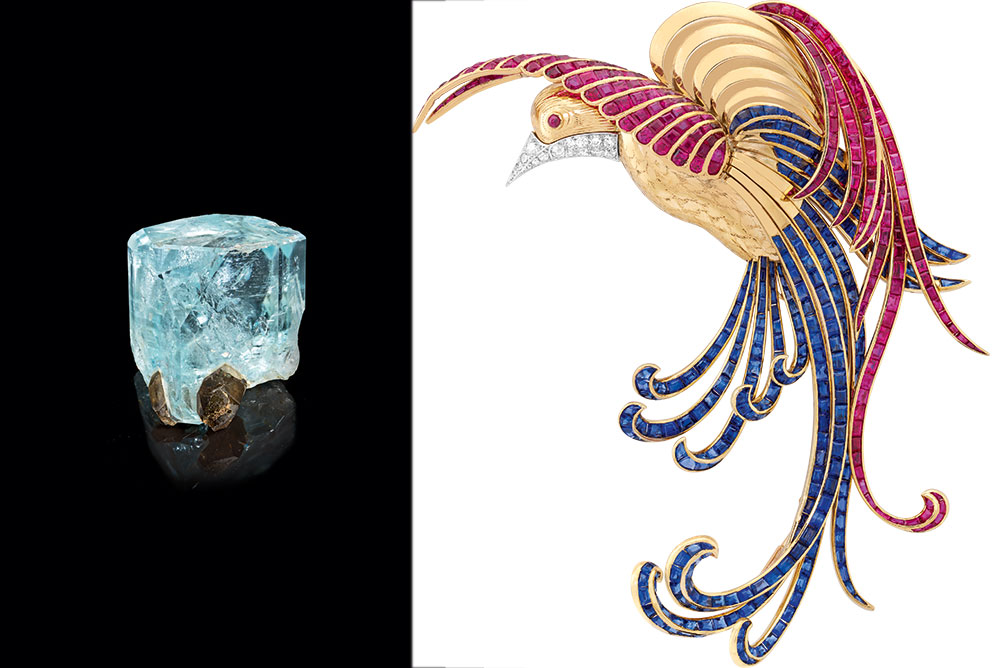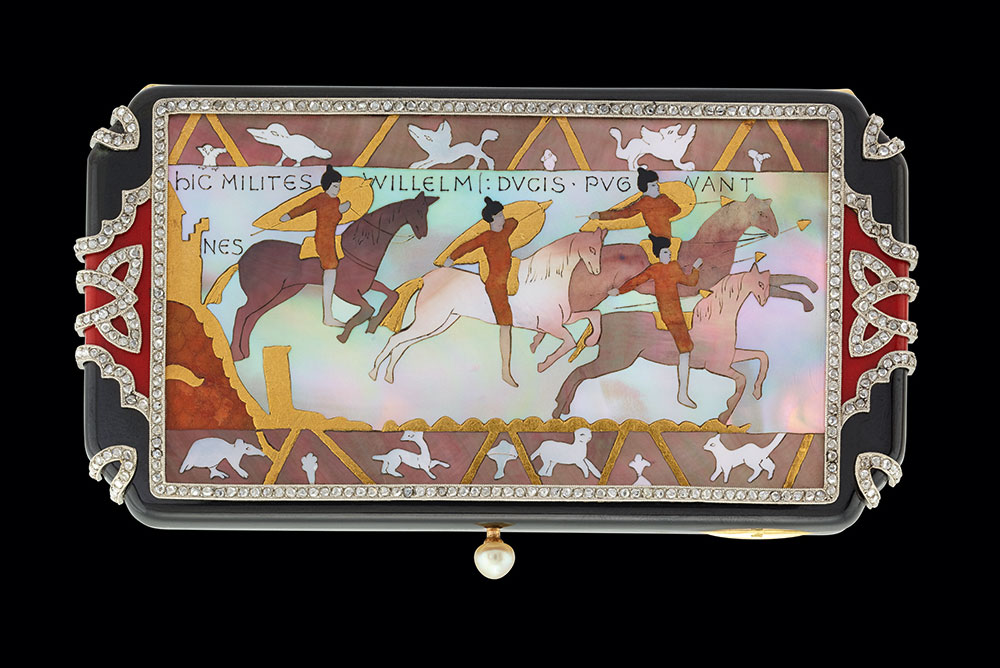
This peony clip from 1937 is made of platinum, yellow gold, six faceted oval rubies, 640 Burmese Mystery Set rubies and diamonds. It was in the former collection of HRH Princess Faiza of Egypt, and is now part of the Van Cleef & Arpels Collection. / From Gems, to be published by Rizzoli in September, which previews an exhibition collaboration between Van Cleef & Arpels and the Musée National d’Histoire Naturelle in Paris.
JEWELRY IS the art of showcasing gems by heightening their shine, color and shape. That’s what the book Gems says. For most of us, though, that reduces the wonder of gemstones, owned by relatively few, coveted by many more.

“Gems,” to be published by Rizzoli in September, previews an exhibition collaboration between Van Cleef & Arpels and the Musée National d’Histoire Naturelle in Paris.
A trip to Paris to see this wonderful collaborative exhibit—between the high jewelry house Van Cleef & Arpels and the Musée National d’Histoire Naturelle in Paris—would be lovely. But the elaborate book, to be published by Rizzoli in September, offers the advantage of, arguably, getting closer to these marvels than we might at the museum.
Don’t dismiss this tome as mere coffeetable-book eye candy. The text takes us as far down as we care to go into geology and geography, craftsmanship and connoisseurship. And if you don’t know the mysteries of Van Cleef’s Mystery Setting (see the peony clip above, as an example), the many examples of gems set with no visible prongs will show you how special the technique is. Some of the mid-century brooches may seem a little twee—how many jeweled poodles and ballerinas can one take?—but in the end, they are dazzling examples of a jeweler’s craft, working with some of the most precious materials Nature has tucked away inside the earth, waiting to be discovered.
—Nancy McKeon

A table clock from 1934 is made of steel and rock crystal, a great example of the Art Deco aesthetic. It’s part of the Van Cleef & Arpels Collection. / From Gems, to be published in September by Rizzoli. The book previews an exhibition collaboration between the jeweler Van Cleef & Arpels and the Musée National d’Histoire Naturelle in Paris.

LEFT: A blue topaz with (at the base) Morion quartz is Russian, from Murzinska. Morion quartz is a very dark smoky quartz. The specimen is no trifle: It stands about 7 cm tall, and is thought to be about 250 million years old. RIGHT: A bird of paradise clip from 1942 is an example of how jewelry often finds inspiration in the natural world (in addition to being made with precious natural materials). This was especially true in the art nouveau period, when capturing Nature’s fluid movements was prized. Of later vintage, the clip is made of yellow gold, platinum, rubies, sapphires and diamonds. / From Gems, to be published in September by Rizzoli, a preview of an exhibition collaboration between Van Cleef & Arpels and the Musée National d’Histoire Naturelle in Paris.

This mediaeval-inspired vanity case from 1925 is part of the Van Cleef & Arpels Collection. It is fashioned from platinum and yellow gold, plus enamel, mother-of-pearl and diamonds. / From Gems, a book that previews an exhibition collaboration between Van Cleef & Arpels and the Musée National d’Histoire Naturelle in Paris.

A polished slab of onyx from Brazil shows what 20th-century essayist, poet and translator Roger Caillois called “royal calligraphy,” the images and natural “writing” and imagery impressed on stones during their formation. The onyx was once part of Caillois’s collection; in 2017, Van Cleef & Arpels made a gift of it to the Musée National d’Histoire Naturelle in Paris. / From Gems, to be published by Rizzoli in September, which previews an exhibition collaboration between Van Cleef & Arpels and the Musée National d’Histoire Naturelle in Paris.

Beautiful examples of jewelry artistry. Something not always appreciated. Thanks.